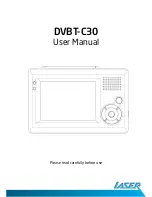
4
9
REFUELLING SAFETY – PETROL IS HIGHLY
FLAMMABLE!!
•
Always stop the engine and let it cool before
refuelling or servicing.
•
Never overfill or tilt your generator as petrol may
spill.
•
Do not smoke during refuelling.
WARNING!
Working with petrol is dangerous;
fumes may linger for some distance.
NO SMOKING! NO NAKED FLAMES!
•
Clean up any spilled fuel immediately.
•
Wash off any fuel which splashes on your skin
immediately.
•
Store fuel safely in an approved container and
away from sources of heat and ignition. Ensure
that the container is clean and contains no water
or rust.
•
Do not inhale fumes from petrol.
•
REFUEL IN A SAFE PLACE. Open fuel cap slowly
to release any pressure which may have formed
in fuel tank. Always wipe unit of fuel or oil spills
before starting.
•
To prevent a fire hazard, move at least 12 feet (4
metres) from fuelling area before starting and
ensure the fuel cap is secure.
•
DO NOT USE ANY OTHER FUEL than that
recommended in your manual. Always follow
instructions in the Fuelling section of this manual
on pg 5.
•
Do not store fuel in the tank for prolonged
periods. – refer to section on ‘storage’ on pg 8.
ELECTRICAL SAFETY
Always check the voltage on the rating plate
of the appliance to be used corresponds to
that of the generator and that the load power
(Watts) required is not in excess of that,
which can be delivered by the generator.
ELECTRICITY CAN KILL
•
Do not touch your generator if you have wet hands.
•
Do not operate your generator in wet conditions.
•
Do not operate your generator near water.
•
Always earth your generator. Refer to the section
‘Grounding you generator’ on pg 5.
•
Never connect two generators together.
•
Never connect your generator to any mains
electricity power outlet. This can cause electrical
current to ‘back feed’ into the local network. For
a fixed installation always consult a suitably
qualified electrician.
•
Make sure any extension cords used are in safe
condition and of sufficient capacity for the task.
CAUTION:
Operating voltages and frequency requirements of all
electronic equipment should be checked prior to
plugging them into this generator. Damage may result
if the equipment is not designed to operate within a
+/- 10% voltage variation and +/- 3% frequency
variation from the generator rating.
A power line conditioner may be necessary in some
applications i.e. with computers. For further details
contact your appliance manufacturer.
ENVIRONMENTAL PROTECTION
Periodically inspect the exhaust to ensure that it has
not corroded. (Ensure the generator is switched off and
cold first.) A leaking exhaust muffler will cause an
increase in noise levels.
Do not dispose of fuel/oil into the sewer system. Take
to your local community facilities for oil disposal.
TROUBLESHOOTING GUIDE
Symptom
Possible cause
Corrective action
Zero power output
1. Engine speed is too slow.
1. Contact Power Craft dealer and
2. Problems in the wiring circuit.
have engine speed adjusted.
3. AC Circuit breaker has tripped
2. Contact Power Craft dealer.
due too high a load.
3. Reduce the load and reset the
breaker.
Low/ High voltage
1. Engine speed is too slow/ fast.
1. Contact Power Craft dealer and have
output with no load
2. Problems in the wiring circuit.
engine speed adjusted.
2. Contact Power Craft dealer.
Low/ High voltage
1. Engine speed is
1. Contact Power Craft dealer and have
output under load
too low at full load.
engine speed adjusted.
2. Excessive load applied.
2. Reduce the applied load.
3. Open rectifier.
3. Contact Power Craft dealer.
Erratic output voltage
1. Dirty or loose wiring.
1. Contact Power Craft dealer.
2. Unbalanced load applied.
2. Remove all loads and apply each
one individually to determine,
which one is causing erratic function.
Noisy operation
1. Loose generator or engine bolt.
1. Tighten all mountings.
2. Faulty bearing.
2. Contact Power Craft dealer.
3. Short circuit in generator field or load.
3. Contact Power Craft dealer.
Engine won’t start
1. No fuel.
1. Check fuel.
2. Fuel cock (tap) is closed.
2. Turn cock (tap) to on position.
3. Fuel cock filter is clogged.
3. Clean fuel cock filter.
4. Main Engine switch is in
4. Press engine switch to on.
closed position.
5. Spark plug cap is not secure or
5. Check spark plug cap and lead.
spark plug lead is damaged.
Replace if necessary.
6. Spark plug dirty or wrong gap.
6. Clean spark plug, adjust gap.
7. Wrong fuel mixture.
Replace if necessary.
8. Not enough compression in
7. Replace with correctly mixed fuel.
the cylinder.
8. Check cylinder head bolts and tighten.
Contact Power Craft dealer.
Fig K.
ENVIRONMENT
In order to prevent the machine from damage during
transport, it is delivered in a sturdy packaging. Most of
the packaging materials can be recycled. Take these
materials to the appropriate recycling locations.
Take your unwanted machines to your local Power Craft
dealer. Here they will be disposed of in an
environmentally safe way.
Helpline: UK 08707 323023
ROI 1800 481 005
Helpline: UK 08707 323023
ROI 1800 481 005
























